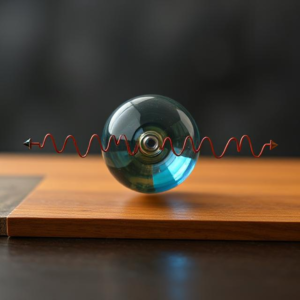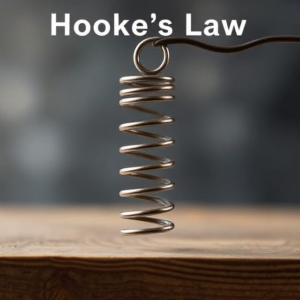1. Simple Harmonic Motion (SHM)
Imagine you’re pushing a child on a swing. If you push the swing just right, it goes back and forth in a regular, predictable way. This is an example of Simple Harmonic Motion (SHM).
SHM occurs when an object moves back and forth around a central point (equilibrium position) in a regular pattern. The key features of SHM are:
- Restoring Force: There’s always a force trying to bring the object back to its starting position. For example, gravity pulls a mass down on a spring, and the spring pushes it back.
- Sinusoidal Motion: The movement looks like a sine wave (up and down in a smooth curve). This is why we call it “harmonic” — it repeats in a regular cycle.

- Key Terms:
- Amplitude (A): The maximum distance the object moves from the central position.
- Frequency (f): How often the object completes one full cycle of movement (like how many times the swing goes back and forth in one minute).
- Period (T): The time it takes to complete one cycle.
- Angular frequency (ω): How fast the object is oscillating, related to frequency.
Mathematically, SHM can be described with a simple formula:
Where:
is the position at time
,
is amplitude,
is angular frequency,
is the phase (the starting point of the motion).
2. Damped Oscillations
Now, let’s imagine the swing again. If there is friction or air resistance, the swing will gradually lose energy over time and start to slow down. Eventually, it will stop moving. This is called damped oscillation.
Damping happens when forces like friction, air resistance, or internal resistance remove energy from the oscillating system. As a result:
- The amplitude (how far the object moves) gradually decreases with time.
- The motion still happens, but it slows down until it eventually stops.
There are different types of damping:
- Light damping: The object still oscillates, but with a gradually smaller amplitude.
- Heavy damping: The object stops oscillating quickly and doesn’t complete a full cycle.
- Critical damping: The object moves to the equilibrium position as quickly as possible without oscillating.
In real life, you might see damped oscillations in things like a car’s shock absorbers or the swinging of a pendulum in a clock.
3. Forced Oscillations
What if you keep pushing the swing? Now the motion doesn’t just depend on the initial push but on an external force that keeps acting on the system.
Forced oscillation happens when an object is continually driven by an external force, like pushing a swing at regular intervals. This causes the object to keep oscillating, even if there’s damping involved.
- If the frequency of the external force matches the object’s natural frequency, this can lead to resonance. Resonance happens when the object oscillates with a larger and larger amplitude, potentially causing damage if it gets too extreme (like an opera singer breaking a glass with her voice).
Key Points of Forced Oscillation:
- Resonance: When the frequency of the external force matches the natural frequency of the system, the amplitude of the oscillation increases greatly.
- Damping: Even when there’s a forced oscillation, damping will reduce the overall energy of the system, unless the external force is strong enough to counteract this loss.
In Summary:
- Simple Harmonic Motion (SHM): Smooth, repeating back-and-forth motion, like a swing without friction. It follows a sinusoidal pattern.
- Damped Oscillations: Oscillations that gradually lose energy due to forces like friction or air resistance.
- Forced Oscillations: Oscillations that happen when an external force is continuously applied to the system.











